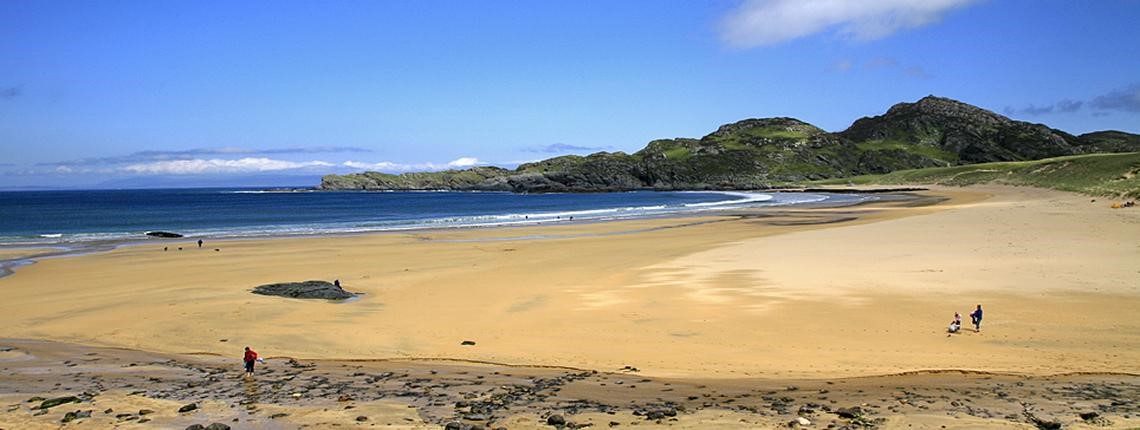Colonsay one of the west coast islands of Scotland
Colonsay, is approx 10 miles long and 2 miles wide with 135 locals, little more than 2 hours from Oban by ferry. Local activities include agriculture, oyster farming, arts, crafts, honey production, a brewery and lobster fishing. The island lies off the west coast of Scotland. Fifteen miles to the north is the island of Mull; the eastern and southern horizons are bounded by the islands of Jura and Islay and to the south west, just visible from a high point on a clear day, is the coast of Donegal in Ireland. To the west lies the Atlantic, with only the Du Hirteach lighthouse standing between Colonsay and Canada. Together with its semi-detatched neighbour Oransay, it forms an island group roughly ten miles long and two miles wide. The island has a primary school (currently with three children and three pre-school), one hotel, a shop and post office and 2 cafes. There is a resident doctor, two churches (one Church of Scotland and one Baptist) but no resident minister. It is served by ferry five times a week (in winter three times) from Oban and there is an additional summer service from Kennacraig via Islay. There are beautiful sandy beaches, the largest and most famous of which is Kiloran Bay (photo above), golden sand over a mile long where the Atlantic rollers provide surf for the adventurous after a westerly wind. The dramatic cliffs of the western coast are home to colonies of seabirds, fulmars, guillemots, razorbills, kittiwakes, shags and all types of gull. There are also a number of wild goats, reputedly the descendants of Spanish goats carried on an Armada vessel shipwrecked on Colonsay.
History. There is evidence of human activity on Colonsay going back to 7,000 B.C. and all over the island evidence of a long history from the Iron Age forts and duns which still dominate the Colonsay skyline, to the abandoned village of Riasg Buidhe, which was inhabited up to 1918. There are several historical sources for those who wish to learn about Colonsay’s history, all of which are stocked by the Colonsay Bookshop. Of all of the historical artefacts to be found on Colonsay and Oransay, the priory on Oransay is without doubt the most impressive. Local legend has it that Oransay was visited by Columba on his journey into exile from his native Ireland. On climbing Beinn Oransay on a clear day he discovered that he could still see the coast of Ireland so he sailed on, eventually founding the religious community on Iona. Much is still standing today, was actually founded by the Augustinians in the early 14th century and became an important religious centre for the islands and Argyll over the next two hundred years. The ruins are well-preserved and there is a wonderful collection of carved gravestones.

